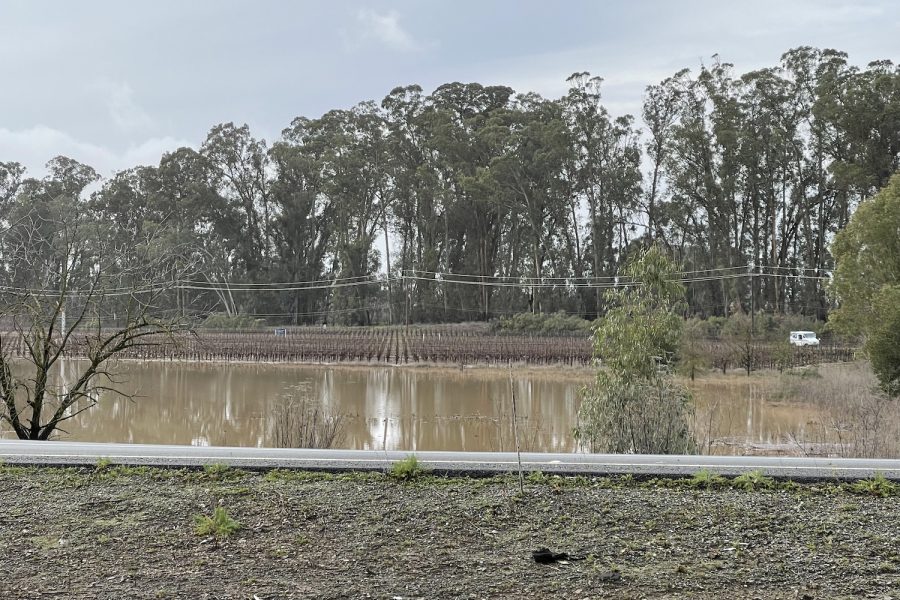California has experienced three weeks of deadly flooding after years of drought, according to The Guardian. The storms, which released 24.5 trillion gallons of water across the state, have killed 20 people and caused hundreds of thousands to lose electricity.
The storms have been caused by strong atmospheric rivers and bomb cyclones, according to The Guardian. Atmospheric rivers are streams of water vapor while bomb cyclones are low-pressure storms that can contribute to atmospheric rivers.
English Teacher Stephan Potchatek, who grew up in California and has friends living there, said the flooding has tragic effects on their lives.
“It is devastating when you have friends whose vineyards have burned down, you have friends who are being flooded out of their homes, when you watch areas that you have grown up with being evacuated,” Potchatek said. “It’s heartbreaking because it’s real people, their lives and their livelihood.”
Colette Brown (’23), who lived in California for 16 years, said the flooding was unexpected due to the droughts and dry climate California typically experiences.
“It’s really alarming, and it’s definitely surprising considering there’s been such a history of drought there,” Brown said. “I don’t think that California is really equipped to handle floods as much as a lot of other places that would be expecting that sort of damage.”
Meanwhile, Potchatek said these storms are not an “isolated and distinct” occurrence but are connected to the other extreme weather events California has experienced.
“The fires and the floods, these massive storms and these debris flows, all of these things are part of a single cycle,” Potchatek said. “And so, this sequence of fires that have been taking place in Northern California and the extended drought is not unrelated to this.”
As climate change continues to warm the atmosphere, the air can hold more moisture and cause storms to intensify, according to The New York Times.
Potchatek said climate change has contributed to the storms in California, as the heating of the ocean causes more rainfall.
“That we are confronting very extreme storms in places like California is obviously a result of transformations, and to say otherwise is to deny a lot,” Potchatek said. “Obviously, this is a climate change disaster and I’m sure that the warming of the oceans is leading to much more rainfall dropping.”
It’s heartbreaking because it’s real people, their lives and their livelihood.
— English Teacher Stephan Potchatek
Bea Borg (’25), a previous California resident, said climate change has certainly influenced the floods.
“When increased energy is put into the atmosphere, it just causes unpredictable and extreme weather,” Borg said. “It’s a common misconception that climate change is going to make everywhere hot, but what it does in most places causes these extreme weather patterns instead.”
Brown said the evident role climate change has played in the California floods will force global attention on climate change issues.
“I think that there’s definitely going to be a reaction in terms of climate activism, because [the flooding] is definitely just showing signs of the climate crisis really taking effect in California, which we’ve seen before,” Brown said.
In response to the flooding, Borg said she hopes members of the global community “recognize that climate change is a much bigger problem than how most people are acting.” Borg also said she hopes that world leaders change their policies to address climate change.
U.S. President Joe Biden has declared a disaster in California, allowing federal aid to help recover areas affected by the floods, according to CNN.
Brown said disaster relief will be most effective for Californians since weather emergencies can not immediately be stopped and require people to “stick out and react in the best way.”
In addition, Brown said California will have to find methods to cope with the flooding in the long term, including implementing more robust infrastructure. It’s a common misconception that climate change is going to make everywhere hot, but what it does in most places causes these extreme weather patterns instead. — Bea Borg (’25)
“[The infrastructure] is going to have to be more durable for flooding, but I think that it’s definitely going to take a long time for that to happen,” Brown said. “It’s going to get changed in a very unequal way where wealthier neighborhoods will get improved infrastructure faster.”
While individuals will try to adapt to the extreme climate and weather events, Potchatek said there is a longer-term issue of whether it is suitable for humans to live in California.
“You have got millions of people living in this little band who are going to continue to try to make life there, as they work in these extremes,” Potchatek said. “But in terms of the longer term and the generational terms, I think there’s going to be some real questions about whether this is a place fit for human habitation.”







